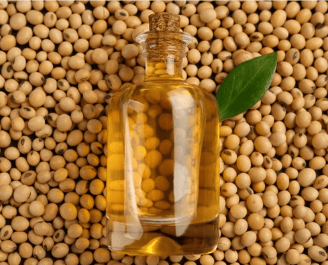SOYA BEAN
SOYA BEAN


The Soybean Revolution: Unlocking its Value in the Global Economy
Soybeans, a legume native to East Asia, have become a vital crop in the world economy. This versatile bean has transformed the food, feed, and industrial sectors, driving economic growth and sustainability. In this blog post, we'll explore soybeans' production, applications, challenges, and opportunities.
Global Production and Trade
Soybean production has surged in recent decades:
- Global production: 362 million metric tons (2020) [1]
- Top producers:
- United States: 113 million metric tons
- Brazil: 105 million metric tons
- Argentina: 55 million metric tons
- China: 14 million metric tons
- Global trade value: approximately $61 billion (2020) [2]
Applications and Benefits
Soybeans' versatility makes them an essential commodity:
1. Food: Soybeans are used in edible oil, flour, and protein products.
2. Feed: Soybean meal is a vital protein source for livestock.
3. Industrial Applications: Soybeans are used in biodiesel, plastics, and textiles.
4. Pharmaceuticals: Soybeans' isoflavones have potential health benefits.
Economic Benefits
Soybeans contribute significantly to producing countries' economies:
1. Employment: Over 10 million people employed in soybean production and processing.
2. Income Generation: Soybean exports earn crucial foreign exchange.
3. Government Revenue: Soybean taxes contribute to government coffers.
4. Rural Development: Soybean production supports rural livelihoods.
[Image: Soybean farming in Brazil. Credit: World Bank]
Challenges and Opportunities
The soybean industry faces challenges:
1. Climate Change: Rising temperatures and changing rainfall patterns affect yields.
2. Trade Tensions: Global trade disputes impact soybean exports.
3. Sustainability: Ensuring environmentally friendly production practices.
Opportunities exist:
1. Sustainable Certification: Adopting certifications like RTRS and ISCC.
2. Technological Innovation: Improving production efficiency and yield.
3. Diversification: Expanding into new markets and applications.
[Image: Sustainable soybean production. Credit: Round Table on Responsible Soy (RTRS)]
Emerging Trends
1. Plant-Based Proteins: Growing demand for soy-based meat alternatives.
2. Biotechnology: Genetic modification for improved yields and disease resistance.
3. Renewable Energy: Soybean-based biodiesel.
[Image: Plant-based protein products. Credit: Beyond Meat]
Conclusion
Soybeans' value in the world economy is undeniable. As demand continues to rise, addressing challenges and leveraging opportunities will ensure its contribution to sustainable economic growth, environmental sustainability, and social responsibility.
Sources:
[1] United States Department of Agriculture (USDA)
[2] International Trade Centre (ITC)
[3] Soybean Association
[4] World Bank
[5] Round Table on Responsible Soy (RTRS)
Statistical Data:
| Region | Soybean Production (2020) | Value (2020) |
| Americas | 223 million metric tons | $33 billion |
| Asia | 63 million metric tons | $9 billion |
| Europe | 22 million metric tons | $3 billion |
| Global | 362 million metric tons | $61 billion |
Infographic:
Soybeans' Economic Impact
- 10 million+ people employed
- $61 billion annual value
- 362 million metric tons produced
- 20+ producing countries
- 30% of global production from the United States
